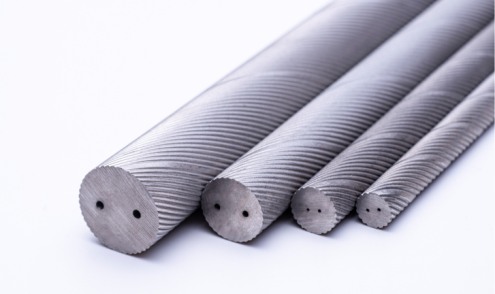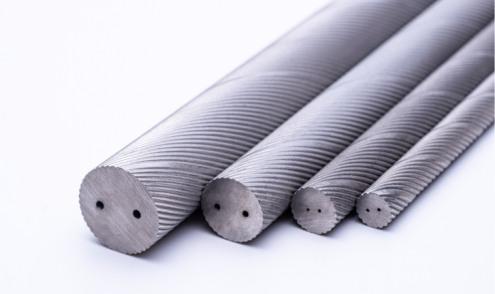n the world of precision manufacturing and tooling, the quest for enhanced tool life and performance is a never-ending pursuit. One of the key innovations in this field is the use ofhttps://www.diatooling.com/helical-coolant-hole-rod.html. These rods, made from tungsten carbide, a material renowned for its hardness and wear resistance, are designed to improve the efficiency and longevity of cutting tools. This article delves into the specifics of carbide rods with helical coolant holes, examining their potential to extend tool life and the factors that contribute to their effectiveness.
The Role of Carbide in Tooling
Carbide, specifically tungsten carbide, is a metal matrix composite that consists of tungsten carbide particles bound together by a metallic binder. It is known for its exceptional hardness, which is second only to diamond, and its ability to maintain sharp edges at high temperatures. These properties make it an ideal material for cutting tools used in various industries, including automotive, aerospace, and electronics.

The Importance of Coolant in Tooling
Coolant plays a critical role in the performance and life of cutting tools. It serves multiple purposes, including:
1.Cooling: Reducing the temperature of the tool and workpiece to prevent thermal damage.
2.Lubrication: Minimizing friction between the tool and workpiece, reducing wear.
3.Cleaning: Removing chips and debris from the cutting area to prevent tool clogging and workpiece damage.
Traditionally, coolant is delivered to the cutting zone through straight holes in the tool. However, this method can be inefficient, leading to uneven coolant distribution and suboptimal cooling effect.
The Innovation of Helical Coolant Holes
The introduction of helical coolant holes in carbide rods represents a significant advancement in tool design. These holes are spiral-shaped, allowing coolant to be delivered in a more controlled and efficient manner. The helical design offers several advantages:
Improved Cooling: The spiral path of the coolant hole ensures that coolant is in contact with the tool for a longer period, providing more effective cooling.
Enhanced Lubrication: The continuous flow of coolant along the helical path helps to reduce friction more effectively than straight holes.
Better Chip Evacuation: The helical path helps to guide chips away from the cutting area more efficiently, preventing tool clogging.
Application of Carbide Rods with Helical Coolant Holes
Carbide rods with helical coolant holes find application in a variety of tooling scenarios, as highlighted on the Zhuzhou Ruiao Tungsten Carbide Co., Ltd. website. They are used in the manufacturing of:
Drill bits
End mills
Reamers
Automobile special cutters
Printed circuit board special cutters
Engine special cutters
Horologe processing special cutters
Integral vertical milling cutters
Gravers
These applications demand high precision and durability, making carbide rods with helical coolant holes an ideal choice.

The Impact on Tool Life
The combination of tungsten carbide's inherent properties and the innovative design of helical coolant holes can significantly extend the life of cutting tools. Here's how:
Reduced Thermal Stress: Effective cooling reduces thermal stress on the tool, preventing tool deformation and breakage.
Lower Wear Rates: Improved lubrication reduces wear, maintaining the tool's sharpness for longer periods.
Fewer Tool Changes: With less wear and fewer thermal issues, tools need to be changed less frequently, reducing downtime and costs.
Conclusion
Carbide rods with helical coolant holes represent a significant step forward in tool design and manufacturing. Their ability to improve cooling efficiency, reduce wear, and enhance chip evacuation has a direct impact on extending tool life. As industries continue to push the boundaries of precision and efficiency, the adoption of such innovative tooling solutions will play a crucial role in achieving these goals.
